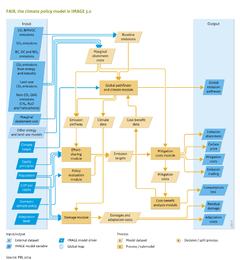Climate policy/Policy issues: Difference between revisions
Jump to navigation
Jump to search
No edit summary |
No edit summary |
||
| Line 2: | Line 2: | ||
|Reference=Den Elzen et al., 2007; Den Elzen and van Vuuren, 2007; Van Vuuren et al., 2011a; Van Vuuren et al., 2012; European Commission, 2010; Den Elzen et al., 2011b; Den Elzen et al., 2012a; UNEP, 2012; Hof et al., 2013; Höhne et al., 2012; Roelfsema et al., 2013a; Roelfsema et al., 2013b; Den Elzen and Höhne, 2010; Den Elzen et al., 2012c; Hof et al., 2012; Den Elzen et al., 2011a; Mendoza Beltrán et al., 2011; Hof et al., 2009; Hof et al., 2011; Hof et al., 2009; Hof et al., 2010; Den Elzen et al., 2012b; Van Vliet et al., 2012; | |Reference=Den Elzen et al., 2007; Den Elzen and van Vuuren, 2007; Van Vuuren et al., 2011a; Van Vuuren et al., 2012; European Commission, 2010; Den Elzen et al., 2011b; Den Elzen et al., 2012a; UNEP, 2012; Hof et al., 2013; Höhne et al., 2012; Roelfsema et al., 2013a; Roelfsema et al., 2013b; Den Elzen and Höhne, 2010; Den Elzen et al., 2012c; Hof et al., 2012; Den Elzen et al., 2011a; Mendoza Beltrán et al., 2011; Hof et al., 2009; Hof et al., 2011; Hof et al., 2009; Hof et al., 2010; Den Elzen et al., 2012b; Van Vliet et al., 2012; | ||
|Description=[[FAIR model|FAIR]] can be used to analyse baseline developments, such as expected climate change damage. However, more often baseline developments are explored using the larger IMAGE framework, and the FAIR model receives this information as input for policy analysis. | |Description=[[FAIR model|FAIR]] can be used to analyse baseline developments, such as expected climate change damage. However, more often baseline developments are explored using the larger IMAGE framework, and the FAIR model receives this information as input for policy analysis. | ||
|Example=As part of the IMAGE framework, FAIR can be used to evaluate a range of policies and strategies, including: | |||
»Long-term mitigation strategies such as emission reductions over time (Den Elzen et al., 2007; Den Elzen and Van Vuuren, 2007; Van Vliet et al., 2009; Van Vuuren et al., 2011b; 2012); | |||
:» Evaluation of current reduction proposals by countries and policy options for the next 10 to 20 years (European Commission, 2010; Den Elzen et al., 2011a; 2011b; 2012b; UNEP, 2012; Hof et al., 2013); | |||
»Evaluation of domestic climate and energy policies for the next 10 to 20 years (Höhne et al., 2012; Roelfsema et al., 2013; 2014); | »Evaluation of domestic climate and energy policies for the next 10 to 20 years (Höhne et al., 2012; Roelfsema et al., 2013; 2014); | ||
»Evaluation of burden sharing or effort sharing regimes (Den Elzen and Höhne, 2010; Den Elzen et al., 2012a; Hof et al., 2012); | »Evaluation of burden sharing or effort sharing regimes (Den Elzen and Höhne, 2010; Den Elzen et al., 2012a; Hof et al., 2012); | ||
»Analysis of regional abatement costs and emission trading (Den Elzen et al., 2008; Den Elzen et al., 2011a; Mendoza Beltrán et al., 2011); | »Analysis of regional abatement costs and emission trading (Den Elzen et al., 2008; Den Elzen et al., 2011a; Mendoza Beltrán et al., 2011); | ||
» Evaluation of proposals for financing climate policies (Hof et al., 2009; 2011); | » Evaluation of proposals for financing climate policies (Hof et al., 2009; 2011); | ||
»Evaluation of trade-offs between mitigation costs, adaptation costs and the benefits of reduced climate damage (Hof et al., 2008; 2009; 2010). | »Evaluation of trade-offs between mitigation costs, adaptation costs and the benefits of reduced climate damage (Hof et al., 2008; 2009; 2010). | ||
The FAIR Policy Evaluation module has been used in determining emission reductions resulting from pledges made for 2020 (Den Elzen et al., 2012c). In 2011, Brazil presented a new, higher estimate for national business-as-usual (BAU) emissions, against which a 36 to 39% reduction pledge was made. The total pledge for all greenhouse gas emissions including emissions from deforestation was a reduction of 20 to 24% compared to the PBL/IIASA BAU emission projections. This reduction is substantially lower than pledged by Brazil from national BAU projections . | The FAIR Policy Evaluation module has been used in determining emission reductions resulting from pledges made for 2020 (Den Elzen et al., 2012c). In 2011, Brazil presented a new, higher estimate for national business-as-usual (BAU) emissions, against which a 36 to 39% reduction pledge was made. The total pledge for all greenhouse gas emissions including emissions from deforestation was a reduction of 20 to 24% compared to the PBL/IIASA BAU emission projections. This reduction is substantially lower than pledged by Brazil from national BAU projections . | ||
Revision as of 13:56, 15 May 2014
Parts of Climate policy/Policy issues
